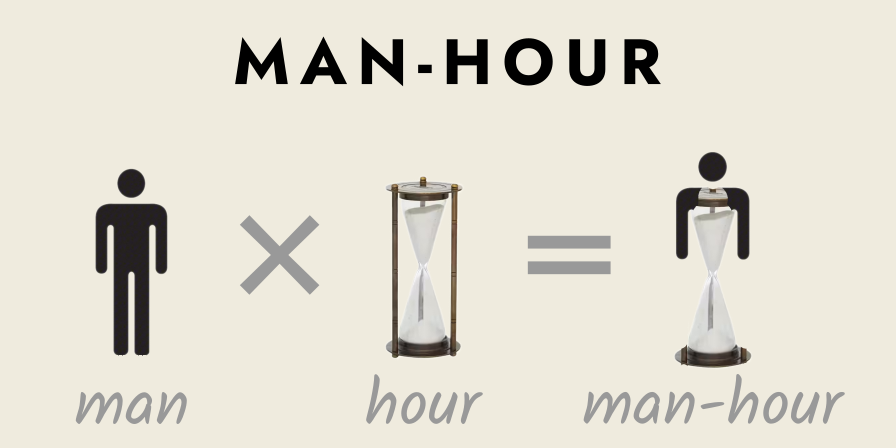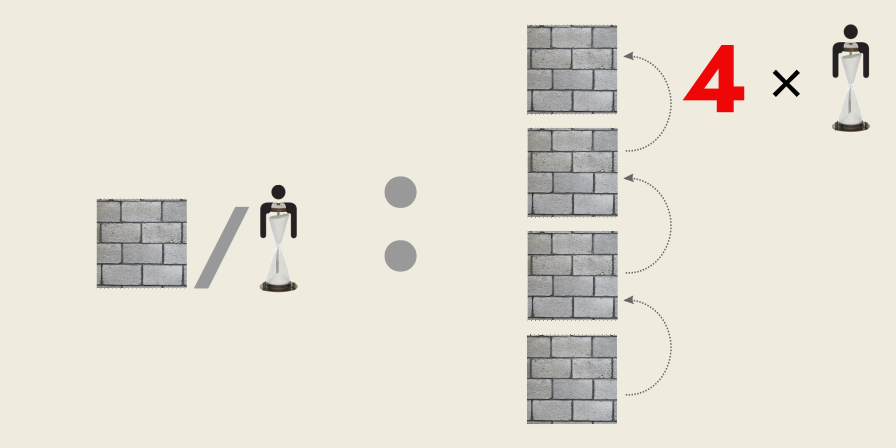
Man-Hour
The man-hour is a unit.
And rather than being a simple unit, like length or time or area, it is a combination of two different things: a multitude (man) and a magnitude (time).
It is not a rate like “men per hour” nor the “amount of work done per person per hour”.
Rather, the “man-hour” is a compound unit, used to compare the amount of “work” done by a person working constantly for an hour, against other tasks to be completed:
number of people × number of hours = man-hour
The concept of “man-hour” can make it easier to calculate the resources required for a project—and so it is used in project management to estimate the time and money required for various tasks.
Putting the Man-hour to Work

The man-hour is a unit used to measure an amount of work.
What sort of work?
Well, it depends on the context.
For a construction company, it could be “blocks laid” or “ditches dug” or “boilers installed”: any relevant amount of work, basically.
Example: a construction site foreman knows that 50 blocks can be laid by the average block-layer per hour.
That is, the average work rate is 50 blocks per man-hour.
The foreman has been asked to estimate the time to build a wall requiring 200 blocks.
How would he do this?
Easy.
If 50 blocks take one man-hour, then we can compare this rate of work to the amount of work to be done: 200 blocks.
50 blocks / 1 man-hour : 200 blocks / ? man-hour
By counting off the 50 blocks against the 200 blocks, we find the 200 blocks are four times greater than the 50 blocks, in quantity:
200 blocks / 50 blocks
= 200 ÷ 50 blocks / blocks
= 4 blocks / blocks
= 4
Thus, we need four times more man-hours.
Now the foreman knows that four man-hours are needed for the wall.
The foreman can either have one block player work on it for four hours: 1 man × 4 hours = 4 man-hours
Or the foreman can have four block layers work on it for one hour: 4 men × 1 hour = 4 man-hours
The end result is the same either way: 4 man-hours of work are needed to build the wall.
Read More
- The mythical man-hour: more details on this unit, as well as a discussion of its counterpart, the woman-month.
